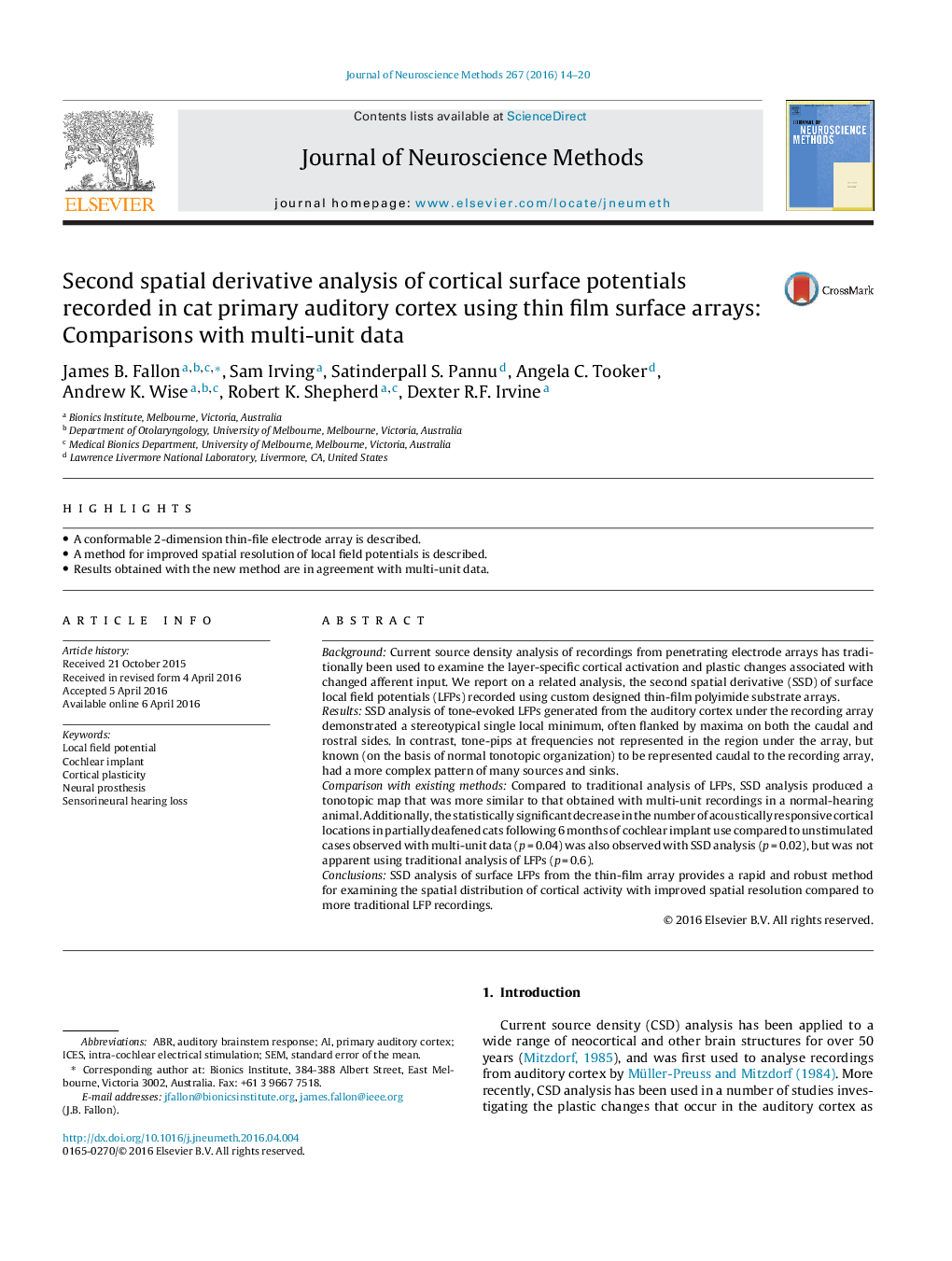| Article ID | Journal | Published Year | Pages | File Type |
|---|---|---|---|---|
| 6267757 | Journal of Neuroscience Methods | 2016 | 7 Pages |
â¢A conformable 2-dimension thin-file electrode array is described.â¢A method for improved spatial resolution of local field potentials is described.â¢Results obtained with the new method are in agreement with multi-unit data.
BackgroundCurrent source density analysis of recordings from penetrating electrode arrays has traditionally been used to examine the layer- specific cortical activation and plastic changes associated with changed afferent input. We report on a related analysis, the second spatial derivative (SSD) of surface local field potentials (LFPs) recorded using custom designed thin-film polyimide substrate arrays.ResultsSSD analysis of tone- evoked LFPs generated from the auditory cortex under the recording array demonstrated a stereotypical single local minimum, often flanked by maxima on both the caudal and rostral sides. In contrast, tone-pips at frequencies not represented in the region under the array, but known (on the basis of normal tonotopic organization) to be represented caudal to the recording array, had a more complex pattern of many sources and sinks.Comparison with existing methodsCompared to traditional analysis of LFPs, SSD analysis produced a tonotopic map that was more similar to that obtained with multi-unit recordings in a normal-hearing animal. Additionally, the statistically significant decrease in the number of acoustically responsive cortical locations in partially deafened cats following 6 months of cochlear implant use compared to unstimulated cases observed with multi-unit data (p = 0.04) was also observed with SSD analysis (p = 0.02), but was not apparent using traditional analysis of LFPs (p = 0.6).ConclusionsSSD analysis of surface LFPs from the thin-film array provides a rapid and robust method for examining the spatial distribution of cortical activity with improved spatial resolution compared to more traditional LFP recordings.
